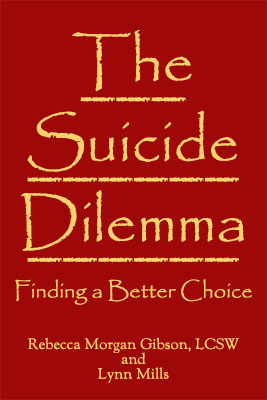
How to help before it's too late. - Bernadette
Anyone who has lost (or fears losing) a loved one to suicide has probably wondered what could be done to prevent it. This book covers it all: how to spot the signs, what to say, what NOT to say, how and where to get help, suicide hotline numbers and case histories from those who survived. It was informative, well organized, easy to understand and truly helpful.
A Timely Read As This Crisis Expands - DS
I found this book increased my knowledge of this epidemic. I was shocked by the diverse age groups, but found many useful suggestions on how to talk with a person contemplating suicide. Also the key actions and words that warn of an impending suicide decision. This book is important for all family members, friends, care givers and educators.
Invaluable - JenEllen
I picked this up off the bookshelf of a home I was visiting - It's an invaluable guide for those navigating the challenging terrain of supporting someone at risk. I found myself reaching for a highlighter throughout, captivated by its logical and accessible approach. Tailored for individuals with friends or family in distress, the book addresses vital questions and sheds light on often-overlooked aspects. The Introduction provides crucial insights for optimal utilization. Rich with examples and personal anecdotes, it skillfully aids comprehension. A must-read for anyone seeking a compassionate and informed perspective on this delicate subject, the book is a beacon of understanding and support."
Calmly listen to someone in distress, ask about feeling suicidal, calmly listen again. - James Payton
Very clear, accurate and helpful discussion of feeling suicidal and the importance of really listening to others, asking about suicidal feelings and taking steps to help someone to be safe if needed. Very helpful Chapter 9 “What is most important to remember.” I recommend this book to everyone.
For the curious, the guilt ridden, and the worried friends. - karen
I found this book quite helpful. For example, I learned what my older friend might have been thinking in the days before he killed himself. I learned how likely it might be for my teenaged relative to attempt suicide again. I learned what to say, to my 40 year old friend, to try to change her mind about ending her life. I learned what I might do if I were the one who was struggling in my own life. I learned all of this and more through the book’s clear explanations and the many transcribed interviews with people who had survived their suicide attempts.
The book was easy to read. I liked that it was designed so that I could use it the way I wanted. I could skip sections and jump ahead to the parts I was interested in. And I liked that the book lists many resources.
I hope this book prevents suicides. And I hope it helps reduce the guilt and suffering of those who have lost loved ones to suicide. I believe both of these wishes are possible.
Carol Anderson, D.Min., ACSW, LMSW
A down-to-earth reader regarding suicide, the book covers significant information that the lay public needs to understand not only to be knowledgeable about the subject but to be an ally for those who suffer, including the suffering of one’s self and one’s own suicidal ideation. Topics include preventing suicide, losses, the myths and truths regarding suicide, symptoms of depression, talking to a suicidal person, treatment and recovery, and seven stories of people who have been suicidal. It ends with a discussion of the main points regarding suicide and how to survive when someone you love commits suicide. The book also offers research regarding this issue.
In this concise yet thorough book, the authors of this compassionately written work treat this difficult subject in a straight-forward manner that takes the reader through the various topics necessary to help themselves or others who are struggling with depression and suicidal thoughts. The utilization of stories throughout the book offers a direct insight into the problem while allowing the reader to connect emotionally to the topic and to learn what others have learned from their suicide attempts. Especially valuable is the information on what to say and not say to a suicidal person, the myths of suicide, signs and stages of suicidality and lethality, and treatment options. There is also a helpful listing of resources. This book is an excellent examination of suicide and is recommended not only for the loved ones but for the suicidal person as well. It could also be helpful for mental health professionals (especially new professionals) as a guideline to help with clients, as well as a reading assignment for some clients.
RECOMMENDED by the US Review
